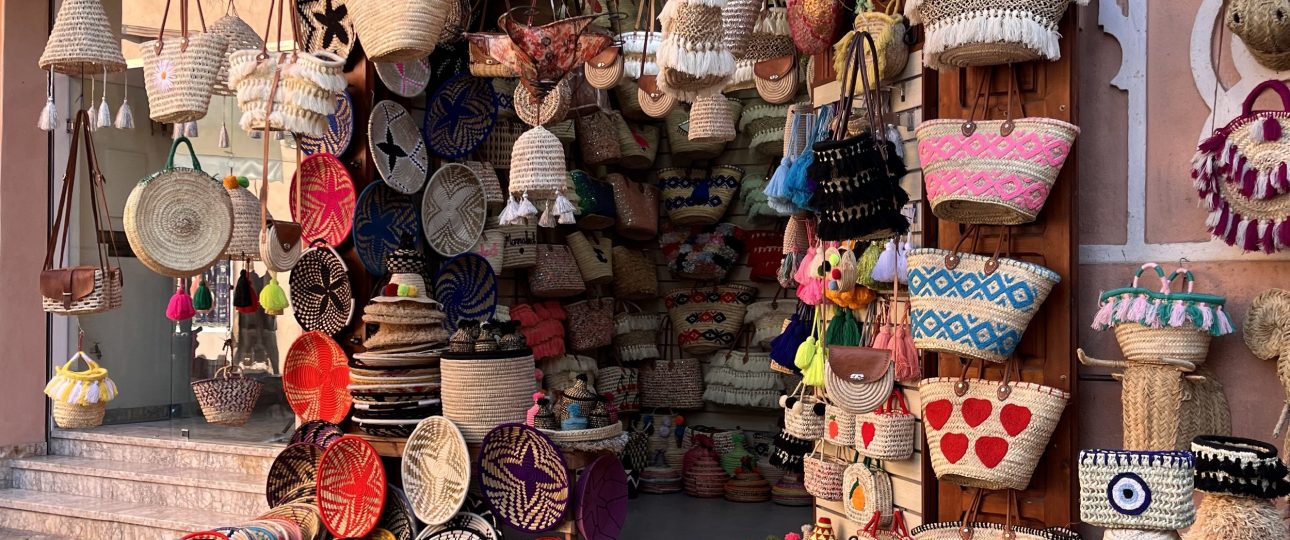Exploring the Vibrant Souks of Morocco
In Morocco, the souks are more than just markets; they are gateways to the country’s rich cultural tapestry. Each souk tells a different story, reflecting the diverse traditions and crafts of the region. From the bustling alleys of Marrakech to the historic lanes of Fes, these markets offer an immersive experience that engages all the senses.
The Essence of Moroccan Souks
Souks are traditional marketplaces found throughout Morocco, often located in the heart of the medina, or old town. They are characterized by narrow, winding alleyways lined with stalls and shops, each offering a unique array of goods. Whether you’re seeking spices, textiles, ceramics, or jewelry, the souks are a treasure trove of handcrafted items.
Key Souks to Visit
Each Moroccan city boasts its own distinctive souks, each with its own charm and specialties:
- Marrakech: The souks around Jemaâ El Fna are famous for their vibrant atmosphere. Here, you can find everything from traditional Moroccan lamps to intricate carpets. The square itself comes alive in the evening with storytellers, musicians, and food stalls.
- Fes: The tanneries of Fes are a must-see. This area, unchanged since medieval times, offers a glimpse into the traditional process of leather-making. Be prepared for strong odors, as natural dyes and treatments are used in the process.
- Rabat: The Rue des Consuls is known for its leather goods and jewelry. As you wander through the narrow streets, you’ll encounter a variety of traditional Moroccan products, from beauty items to spices.
Unique Features of Moroccan Souks
What makes Moroccan souks stand out is their deep connection to the country’s history and culture. Here are some features that make them unique:
1. Artisanal Craftsmanship
Moroccan souks are a testament to the country’s rich tradition of craftsmanship. Artisans create everything by hand, from vibrant textiles to intricate metalwork, each piece reflecting the skill and artistry passed down through generations.
2. Cultural Interaction
The souks are a melting pot of local and tourist interactions. They provide a unique opportunity for cultural exchange, where visitors can learn about traditional crafts and bargaining techniques from local vendors.
3. Culinary Experiences
As you navigate the souks, you’ll encounter a variety of culinary delights. Stalls brimming with spices, olives, and nuts invite you to sample local flavors. Be sure to try:
- Tanjia: A slow-cooked meat dish unique to Marrakech, traditionally prepared in a clay pot.
- Bebbouche: Snails cooked in a flavorful broth of spices.
- Mint Tea: A staple of Moroccan hospitality, often served to welcome guests.
Best Time to Visit
The ideal time to explore Morocco’s souks is during the spring (March to May) and fall (September to November) when the weather is mild. Summers can be hot, particularly in Marrakech, while winters can be cooler, especially in the north.
Getting to the Souks
Reaching the souks can be an adventure. Here’s how you can get there:
By Air
Most international travelers fly into major cities like Marrakech, Fes, or Casablanca, which have well-connected airports.
By Train
Morocco’s train network is efficient, making it easy to travel between major cities. The journey from Casablanca to Marrakech is particularly scenic.
Local Transportation
Once in the city, you can use local transportation options:
- Taxis: Available in different colors; negotiate the fare or ask for the meter.
- Public Buses: A budget-friendly option, though not always reliable.
- Walking: The best way to explore the medina and soak in the atmosphere.
Navigating the Souks
While the souks can be overwhelming, navigating them can be a rewarding experience. Here are some tips:
- Be Prepared to Bargain: Haggling is part of the shopping experience. Start at half the price and negotiate from there.
- Keep an Eye on Your Belongings: Like any crowded place, be mindful of your possessions.
- Take Your Time: Don’t rush through the souks; allow yourself to explore and discover hidden treasures.
Local Etiquette and Tips
Understanding local customs can enhance your experience:
- Dress Modestly: While Morocco is relatively liberal, it’s respectful to dress modestly, especially in rural areas.
- Ask Before Taking Photos: Some vendors may not appreciate having their goods photographed.
- Learn a Few Words of Arabic or French: It can go a long way in building rapport with locals.
Summary of Key Facts
- Souks: Traditional marketplaces filled with handmade goods.
- Best Time to Visit: Spring and fall for mild weather.
- Getting There: Accessible by air, train, and local transport.
- Cultural Significance: Represent a rich tapestry of Moroccan life and craftsmanship.
- Navigating Tips: Be prepared to bargain, keep belongings secure, and take your time exploring.
Visiting the souks of Morocco is more than just a shopping trip; it’s a journey into the heart of Moroccan culture. Whether you’re seeking unique souvenirs, delicious food, or simply the thrill of exploration, the souks promise an unforgettable experience. So pack your bags, embrace the adventure, and get ready to lose yourself in the magic of Morocco’s souks!



